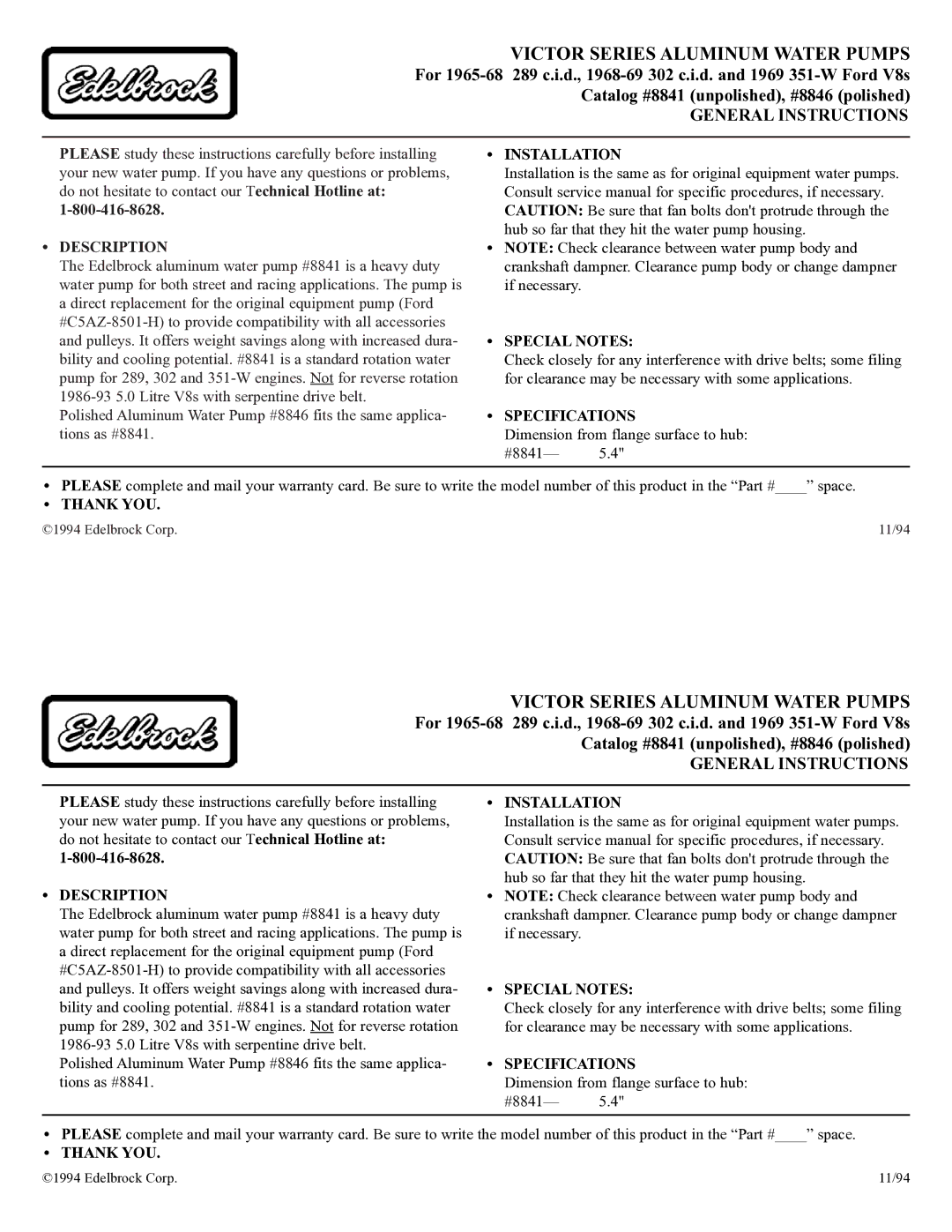1968-69 specifications
Edelbrock is renowned for its legacy in the performance aftermarket, and the 1968-69 era signifies a pivotal point in automotive performance enhancement, particularly for vehicles like the Chevrolet Camaro and Pontiac GTO. During these years, Edelbrock introduced an array of products that would become foundational to hot rodding culture and high-performance upgrades.One of the standout features of Edelbrock's offerings in this time frame was the introduction of high-performance intake manifolds. These manifold designs were engineered to optimize airflow to the engine, significantly boosting horsepower and torque. The use of lightweight aluminum allowed for better weight distribution when compared to the stock cast-iron units, leading to improved vehicle handling and performance.
The well-known Performer series intake manifold, which developed during this period, became a go-to choice for enthusiasts seeking to enhance their muscle cars. With a focus on maintaining a broad power band, these manifolds allowed engines to breathe better at both low and high RPMs, making them extremely versatile for street and track applications alike.
Another key feature of Edelbrock during the 1968-69 era was the launch of performance carburetors. The Edelbrock 1406 Performer series carburetor featured a square-bore design, improving throttle response and deliverability, crucial for muscle car enthusiasts. These carburetors were designed for maximum efficiency and ease of tuning, reflecting the evolving demands of the performance market.
In addition to intake systems and carburetors, Edelbrock also advanced its capabilities in cylinder head technology. The company refined its aluminum cylinder heads, which provided increased airflow and reduced weight, allowing engines to achieve higher compression ratios and, consequently, more power.
Edelbrock’s commitment to quality craftsmanship led to the introduction of carefully engineered products that catered to both amateur and professional builders alike. With a strong focus on durability, many components were designed to withstand the rigors of high-performance applications, ensuring that they not only boosted power but did so reliably.
Overall, the 1968-69 period marked a significant era for Edelbrock, illustrating a blend of innovative engineering and the passion for performance. As a result, their products have played a key role in shaping the muscle car landscape, making them a staple for enthusiasts seeking speed, efficiency, and reliability in their builds. In sum, Edelbrock's pioneering technologies during these years laid a strong foundation for the performance industry, influencing generations of automotive enthusiasts.

